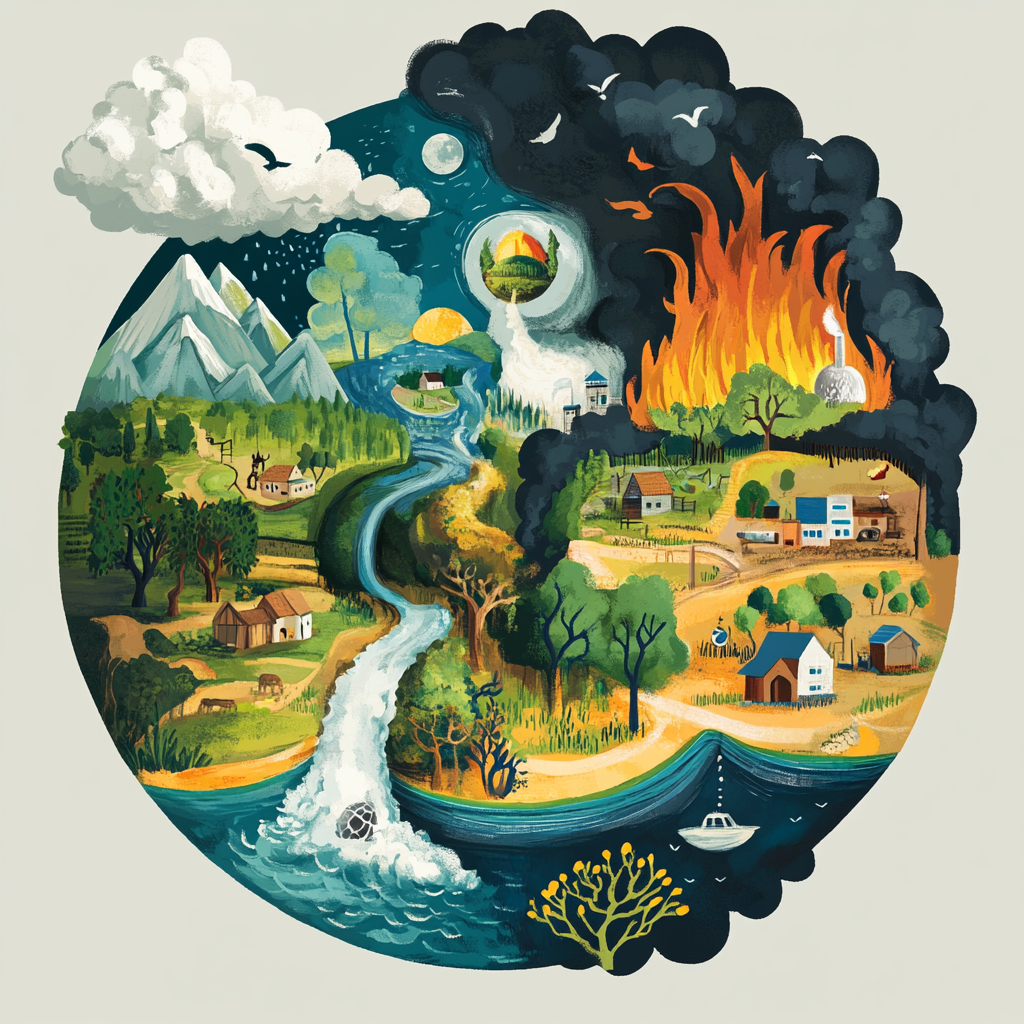The Role of CO and NOx in Accelerating Global Warming
NOx (nitrogen oxides) and CO (carbon monoxide) are both important air pollutants that can indirectly contribute to climate warming, even though they are not greenhouse gases themselves. Here’s how they are linked to global warming in simple chemistry terms:
1. Carbon Monoxide (CO) and Climate Warming:
- CO is a colorless, odorless gas produced by incomplete combustion of carbon-containing fuels (like fossil fuels). While CO itself is not a greenhouse gas, it can affect the concentration of greenhouse gases in the atmosphere, which ultimately contributes to global warming.
- CO’s Role in the Atmosphere:
- CO reacts with hydroxyl radicals (OH) in the atmosphere. Hydroxyl radicals are important because they help break down many pollutants, including greenhouse gases like methane (CH₄).
- When CO reacts with OH, it reduces the amount of OH radicals available to break down methane. As a result, more methane remains in the atmosphere, and methane is a potent greenhouse gas (it has a much stronger warming effect than CO₂, even though it’s less abundant).
- In simple terms: CO increases the concentration of methane, which leads to more greenhouse gases in the atmosphere, enhancing the greenhouse effect and warming the planet.
2. Nitrogen Oxides (NOx) and Climate Warming:
- NOx refers to a mixture of nitric oxide (NO) and nitrogen dioxide (NO₂). NOx is produced from high-temperature combustion processes, such as in vehicles and power plants.
- NOx and Ozone Formation:
- NOx plays a key role in the formation of ozone (O₃) at ground level. While ozone in the stratosphere protects us from harmful UV radiation, ground-level ozone is a harmful pollutant and a potent greenhouse gas.
- In the presence of sunlight, NOx reacts with volatile organic compounds (VOCs) to produce ozone (O₃). This ozone then traps heat in the atmosphere, acting like a greenhouse gas and contributing to global warming.
- Chemically:
NO+VOCs+Sunlight→O3(ground−levelozone)NO + VOCs + Sunlight → O₃ (ground-level ozone)NO+VOCs+Sunlight→O3(ground−levelozone) - This ground-level ozone absorbs infrared radiation, which contributes to the greenhouse effect and leads to a warming of the atmosphere.
- NOx and Methane:
- NOx also reacts with methane (CH₄) in the atmosphere, contributing to its breakdown, but it can indirectly cause warming by creating ozone (which is a greenhouse gas) and by affecting the chemical balance of gases in the atmosphere that regulate temperature.
The Connection Between NOx, CO, and Climate Warming:
- CO and NOx both contribute to the formation of ground-level ozone (O₃), which is a greenhouse gas. The more CO and NOx in the atmosphere, the more ozone is created, which leads to increased warming.
- CO increases methane levels, which is another powerful greenhouse gas.
So, in simple terms:
- CO increases methane, which is a potent greenhouse gas.
- NOx leads to the formation of ozone, which is also a greenhouse gas.
Both methane and ozone trap heat in the atmosphere, which contributes to the greenhouse effect and causes global warming.
Recap:
- CO → Increases methane → Increases greenhouse gases → Warms the planet.
- NOx → Forms ozone → Increases greenhouse gases → Warms the planet.
Together, NOx and CO are contributors to climate change because they indirectly increase the concentration of greenhouse gases like methane and ozone, both of which have a significant warming effect on the Earth.

